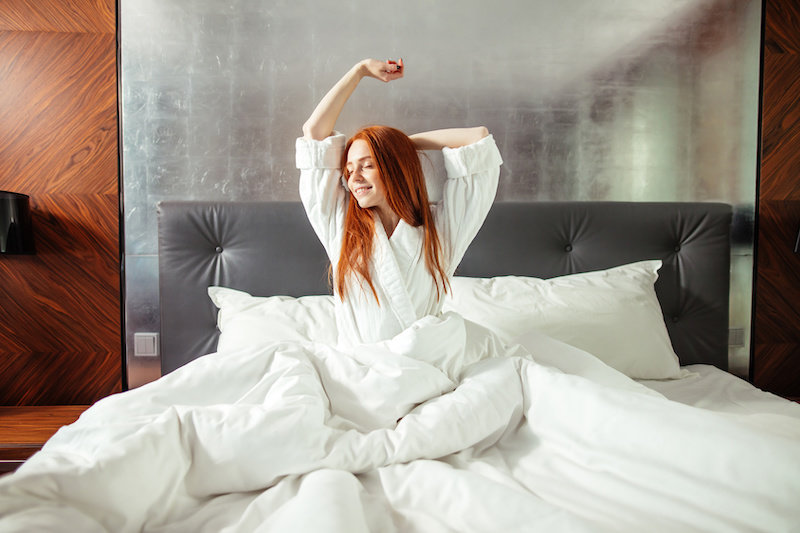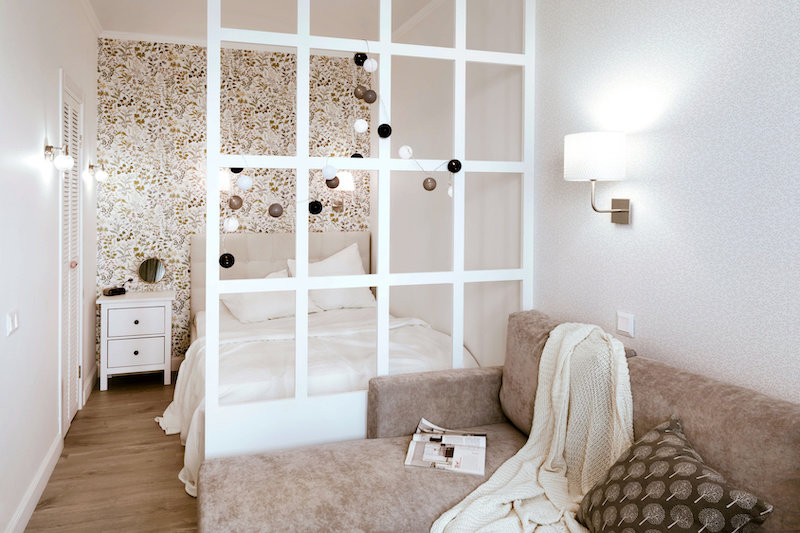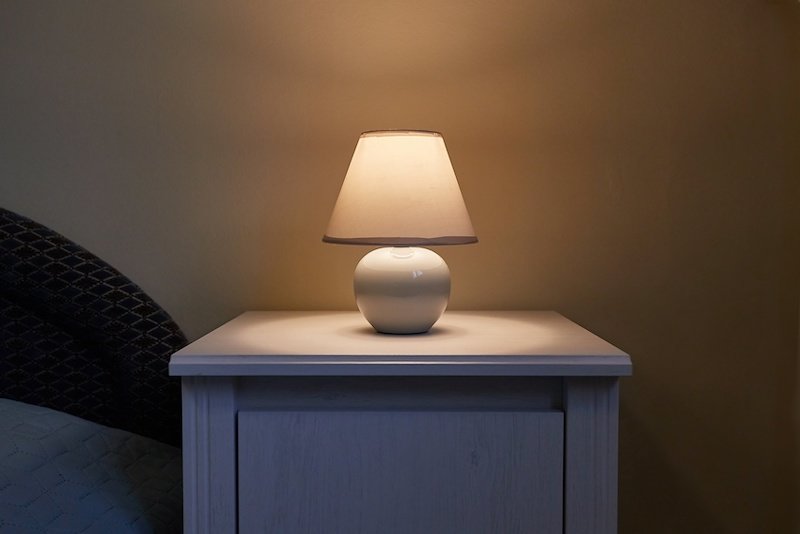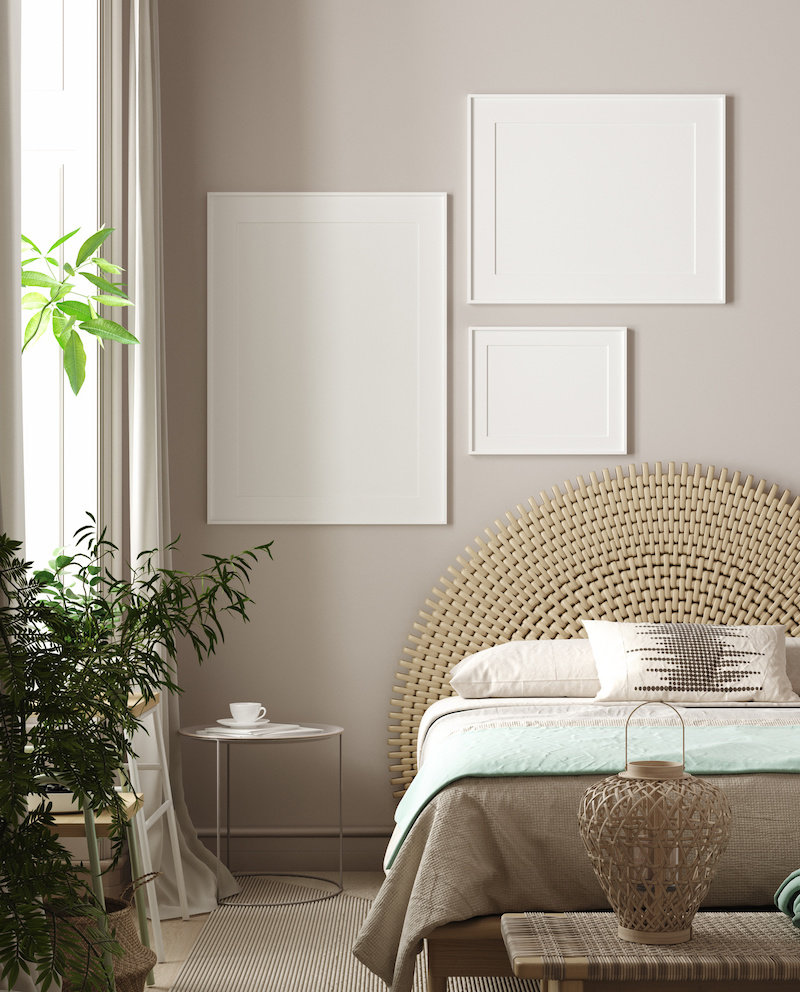Upgrade Your Bedroom, Improve Your Sleep: How to Facilitate Quality Rest and Relaxation at Home
 In order to have a productive next day, and stay in great health, getting a good night's sleep is paramount. Without ample rest, the mind and body just cannot keep up with daily demands, especially when poor sleep occurs night after night. Unfortunately, there are many small factors that can chip away at people's ability to get a good night's rest.
In order to have a productive next day, and stay in great health, getting a good night's sleep is paramount. Without ample rest, the mind and body just cannot keep up with daily demands, especially when poor sleep occurs night after night. Unfortunately, there are many small factors that can chip away at people's ability to get a good night's rest.
Most find that working to eliminate those factors and optimize sleep patterns is well worth the effort — but it is important to know just where to start. Luckily, it is easy to make this change with help from this guide. Here's all everyone needs to know about improving sleep quality with smart bedroom upgrades and simple lifestyle changes.
Table of Contents
- The Importance of a Good Night's Sleep
- Facts and Myths About Sleep
- How to Design a Bedroom for Better Sleep
- Factors to Consider When Choosing a Mattress
- Additional Steps to Better Sleep
- Determine How Much Sleep You Need
- Stick to a Sleep Schedule
- Pay Attention to What You Eat and Drink
- Limit Daytime Naps
- Understand Your Body's Circadian Rhythm
- Include Physical Activity in Your Daily Routines
- Manage Worries Before Bedtime
- Don't Add More Stress If You Can't Fall Asleep
- Know When to Contact Your Doctor
The Importance of a Good Night's Sleep
Each night, upon going to sleep, the brain and body start the biological repair processes in earnest. The brain works hard in cataloging the prior day's activities and thoughts, creating new pathways through the memory banks. The body, on the other hand, works on repairing cell damage, regulating hormones, and restoring the immune system among other vital tasks. Together, these processes prepare the mind and body for the next day, ensuring you can operate at peak efficiency.
Losing just an hour or two of sleep each night can seriously disrupt these processes, leading to a number of difficulties the next day. The brain must have enough time to move into a deep state of sleep to start all the repairs. This only begins in the third stage of non-REM, or rapid eye movement, sleep and in REM sleep. Throughout the night, people move through all the stages of sleep in a cycle, allowing the mind and body to rejuvenate.
Without enough sleep, it is common to experience:
- Daytime drowsiness
- Inability to pay attention to the details
- Difficulties thinking and making decisions
- Slow reaction times
- Trouble using healthy coping skills
- Elevated hunger levels
- Poor immune system function
- Decreased emotional processing
- Low sex drive
- Increased inflammation
- Bouts of uncontrollable microsleep
A lack of adequate sleep also increases the risk of a number of health conditions, including diabetes and heart disease. People are also at a higher risk of suffering injuries at work and home after sleep deficiencies set in. The resulting inability to think clearly and make logical decisions can cause errors that lead to potentially serious injuries. In fact, some of the world's biggest disasters, such as the Chernobyl nuclear meltdown, occurred, at least in part, due to sleep deprivation.
What is Sleep Hygiene?
Great sleep hygiene is the answer to sleep deprivation. Sleep hygiene is all the different methods people use to optimize the quality of the sleep they get. It is all the habits that people develop, and often fiercely protect, to get enough rest each and every night.
Sleep hygiene often starts with the full preparation of the bedroom. The removal of all electronic devices and other potential distractions is usually the first step. A look inward might come next to find all the other things that might compromise the quality and quantity of sleep enjoyed each night.
Good sleep habits often take time to develop and may require some trial and error. What works for one person might not be the ticket for another, so it makes sense to try out the different tools and techniques before committing fully. With this approach, it is possible to weed out all the disruptions and habits that keep people from getting enough quality sleep.
Facts and Myths About Sleep
Despite being in the age of information, the facts and myths about sleep are all mixed up. Many tall tales continue to circulate as people try to understand how to optimize their sleep patterns. Common myths include:
MYTH: Five Hours is Enough Rest
According to the Centers for Disease Control and Prevention, adults need to get at least seven hours of sleep every night for optimal health and wellness. So, only getting five hours a night will just not cut it, especially on a regular basis.
MYTH: People Can Make Up Lost Sleep
Despite hopes otherwise, it is impossible to catch up on lost sleep, according to a study performed by Harvard Medical School. Even getting in a good long 10 hours on the weekend does little to reverse the effects of sleep deprivation, such as poor concentration and slow reaction times.
MYTH: Natural Sleep-Wake Cycles are Overrated
The body's circadian rhythm is no joke and should not be treated as such. The Sleep Foundation reports that when shift workers take on schedules that go against their natural circadian rhythm, sleep deprivation side effects set in, despite getting more than enough sleep each night.
MYTH: People Can Control Microsleep
According to a report by U.S. News, microsleep is the brain shifting into stage one non-REM sleep for just a few seconds at a time — and it can occur after just one night of poor sleep. The risk of microsleep increases with repetitive tasks, such as driving, so it is incredibly dangerous to let it go unaddressed. And it cannot be detected nor controlled, so the only way to fix it is to optimize sleep quality and get enough rest.
By debunking the myths about sleep, it is possible to better understand what a great night's sleep might look like. It also helps reveal just why anyone would want to make sleep hygiene a top priority in life.
How to Design a Bedroom for Better Sleep

In order for good sleep habits to have the desired effect, the bedroom must be set up right. The space should promote quality sleep by helping you fall asleep fast and stay uninterrupted all night long. And it goes far beyond finding the perfect mattress, a comfy pillow to help you sleep better and eliminating electronics, although these are all important parts of the process.
The bedroom design process requires a good hard look at the entire space to optimize all the areas that can impact your sleep quality. Here are some ways that everyone can create the perfect bedroom for better sleep.
Create a Plan and Keep Notes for Inspiration
Designing a bedroom for better sleep starts with a plan. Begin by envisioning all the elements that made for a great night's sleep. Reflect on what made the bed, lighting, and other elements so perfect that night.
With a clear vision of the perfect bedroom for sleep, it is possible to move forward in making it a reality. Starting with the bed, use a sketchpad to build the layout of the bedroom of your dreams. From fans to indoor plants, maintain a focus on improving sleep quality while placing each item.
Take notes on all the other elements that can help people sleep better to potentially add them to the room as needed. Pay close attention to the elements that help reduce disruptions, like pink noise generators, ensuring sleep cycles remain intact all night long. With their personal sketch and notes in hand, everyone can improve their bedrooms and upgrade their sleep as a result.
Proper Lighting
Getting great sleep year round depends on the full control of the lighting in the bedroom. The lighting must be just right both during and before sleep to achieve the highest-quality rest and relaxation. Thankfully, there are many elements on the market today designed to help everyone control the lighting in their bedroom, such as:
Blackout Curtains
When light shines through the window or even just peeks through the curtains, it can seriously disrupt sleep. Unless it is possible to get at least seven hours of sleep before that happens, blackout curtains are a must. These ultra-thick curtains block out all of the light trying to flow into the bedroom bright and early in the morning.
To fully block every smidge of light from coming in, mount the curtain rod a couple inches higher and wider than normal. Then, buy curtains a bit bigger than would normally be needed. This will ensure coverage of every inch of the window, keeping light from coming into the room uninvited.
If blackout curtains are not possible, then use an eye mask instead for a similar effect. Test out the eye mask before buying to verify it is comfortable and fully blocks all light.
Dimmer Switches

Light exposure matters right before bed as well. Exposure to bright overhead lights, for example, can have a negative impact by making it difficult to fall asleep. Thankfully, it is easy to get around this problem by installing a dimmer switch and placing a specialty bulb in that fixture.
If the dimmer switch installation cannot happen, there are also lamps with this capability. As long as the right bulb is installed, users can turn the brightness on the lamp up and down as needed to facilitate a good night's rest.
For those unavoidable middle-of-the-night bathroom trips, it is important to go one step further by only navigating by nightlight. Place a few of the motion-detector-activated nightlights along the route to the bathroom and in the bathroom itself, keeping light exposure to the bare minimum.
Smart Controls
Smart controls allow people to set up automatic lighting changes that ready their bedroom for better sleep. Using a smartphone or computer, users can adjust the light hue, brightness, and timing in just the bedroom alone or the entire home.
The smart tech controls can turn down the lights before bedtime and even adjust the hue to a beneficial spectrum. The high-tech lighting system can eliminate blue hues, for example, which tend to boost alertness rather than help the mind settle down for the night.
With these elements in place, full control of the bedroom lighting can occur, helping optimize the space for sleep.
Minimize the Presence of Screens
Light in the blue spectrum interrupts the production of melatonin, an essential hormone required for great sleep. This is bad news for those who love their electronics, as screens are a major source of disruptive blue light. This includes TVs, smartphones, and even digital alarm clocks.
To keep blue light exposure to a minimum:
- Completely remove all TVs, computers, and tablets
- Never use a smartphone while lying in bed
- When using a phone as an alarm, keep it in a drawer
- Keep the digital alarm clock display covered
If used to using computers and other devices before bed, use an app to shift the light spectrum from blue to red. This will help ensure your body produces melatonin as expected.
Beyond how light exposure affects biological processes, it is just plain bad for falling asleep. The stimulating visuals and information keeps the brain awake and primed for action, rather than letting it get ready for rest. As they are media-rich and full of never-ending content, smartphones and tablets can have a similar effect.
Experts suggest ending screen time an hour or two before heading to bed for best results, as reported by HuffPost. And above all else, keep all screens out of the bedroom to resist the temptation to flip something on when sleep does not come easily. If your bedroom doubles as a home office, you may want to find a way to visually separate the two spaces or move the office to a different room.
Air Temperature and Flow
There's no doubt about it — temperature and air flow can have a big impact on sleep quality. For most, bedroom temperatures sitting between 60 and 67 degrees Fahrenheit are considered optimal for sleep, according to The National Sleep Foundation. To ensure bedroom temps always fall into that range, take a close look at the thermostat and other temperature-regulating elements.
When it comes to heat, a programmable thermostat is the way to go. This device automatically adjusts the temperature throughout the day, creating the perfect environment for comfortable living and quality sleep. Set it to adjust down to about 65 degrees Fahrenheit about an hour before bed to create the perfect sleep environment.
Also, consider installing a large ceiling fan that can run all night as needed to improve airflow. If that is not possible, place at least one pedestal fan in the bedroom at bed height. Run it as needed to move air through the room and keep it at a comfortable temperature all night long. Those living in hot climates should go one step further by controlling their bedroom temperatures with an air conditioning unit. With these steps, people can keep hot and cold temperatures from impacting their quality of sleep. Make sure to keep your HVAC system in good condition so you don't run into any unexpected outages.
Decorate with Soothing Colors, Sounds, and Pictures
Colors, sounds, and imagery all work together to create the ideal atmosphere for excellent sleep. While decorating the bedroom, remember to:
- Choose relaxing shades of blue, green, or gray for the walls
- Use similar shades for the flooring, bedspreads, and other elements
- Avoid bright, bold colors, like red and yellow, as they can disrupt sleep
In addition to soothing colors, select pictures with imagery that invokes a good night's rest. Go with nautical scenes or landscapes, as they can provide a sense of calm that helps facilitate rest.
Do not forget to bring soothing sounds into the mix but skip the music as that can be energizing and distracting. Instead, opt for sound machines that play pink noise. Alternatively, use an app and set a smartphone to play these beneficial sounds from a nearby drawer. When playing pink noise throughout the night, the sounds optimize deep sleep — and even help improve memory.
With all the right decorative elements in place, the bedroom will be primed for sleep. This will help create the ambiance needed to get enough quality rest each and every night.
Add Indoor Plants

Indoor plants not only beautify the room, but also refresh the airspace by producing oxygen. And when people select just the right kinds, the scent they leave behind can bring along sweet dreams in no time flat. Fragrant plants to keep in the bedroom include:
- Lavender
- Jasmine
- Chrysanthemums
- Chamomile
- Gardenia
- Gerbera Daisy
Choose live plants over cut flowers for their ability to clean the air and refresh the oxygen in the airspace.
Learn the light requirements of the plants you choose and position them across the bedroom in areas where they will thrive. Open the curtains in the bedroom during the day to let in enough light for the plants to stay in good health. Remember to water each one on a regular basis by following the requirements on their identification cards.
Experiment with different kinds of plants, finding the fragrance combination favored most during the rest hours. Change the plants' positions on occasion as well to see if that has an impact on sleep quality. Taking the time to figure out personal sleep preferences goes a long way in improving both the quality and quantity of sleep enjoyed each day.
Incorporate Aroma Therapy
If fragrances have a big impact on your ability to sleep deeply and through the night, take it to the next level with aroma therapy. Using the preferred essential oils, aroma therapy allows people to infuse their bedrooms with truly relaxing scents. Certain scents help sleep more than others, so choose carefully to enjoy the desired effect.
Popular essential oils for sleep include:
- Valerian root
- Sweet marjoram
- Lemon
- Ylang Ylang
- Bergamot
- Clary sage
Of course, lavender, chamomile, and jasmine are all solid choices as well when it comes to promoting relaxation and improving sleep.
Although simply blotting the essential oils on the edge of a blanket can help improve sleep, diffusers have a stronger effect. With essential oil diffusers, the room fills with the scent of choice, creating a truly relaxing environment perfect for quality sleep. Once the scent is present in the air, turn off the diffuser and simply take it all in.
While breathing in these scents, the mind and body start to relax and enter a restful state. This primes the system for sleep and helps ease the transition from wakefulness. Make turning on the diffuser a part of a regular bedtime routine to really reap the rewards.
Reduce Clutter
While creating the perfect bedroom for better sleep, aim to reduce clutter through every step. When the bedroom has too much clutter, the space can feel too busy and distracting for quality sleep. Even worse, clutter can cause people to feel anxious, keeping them up ruminating late into the night. When this occurs, sleep quantity and quality declines, creating a never-ending cycle of poor rest.
To prevent this issue, look at all flat surfaces with a focus on simplifying their layout. Remove unnecessary items and place them in other areas of the house to keep the bedroom peaceful. Although they might be meaningful, put away excessive knickknacks and other trinkets, keeping the décor to a minimum.
Ensure the bed remains the centerpiece of the room and everything else simply exists to improve sleep. If something does not serve that purpose, remove it from the room to make sleep quality a top priority. Getting dressed, watching movies, and putting away laundry can all occur in other parts of the house without impacting sleep.
With the bedroom clear of clutter, make continued clutter reduction possible by ensuring everything has its own place in the home. Assign a spot for each item and make sure they end up in their place to make clutter a thing of the past.
Layout Matters
If the bedroom absolutely cannot just be used for sleep, which is the best approach, then use the layout to create separate areas for each activity. Add privacy screens, if possible, or just arrange the furniture as dividers to create separate spaces.
Reflect on how the space will be used day and night to include all the elements that matter most. Then, think about how any of the elements can prove distracting in the night or even right before bed to make sure they do not impact sleep.
If the items pass the test, arrange them carefully with an eye on design and a focus on optimizing sleep. Remember to find alternate areas for activities, like studying and chatting with friends. Otherwise, the mind may focus on those activities rather than sleep when it comes time to head to bed.
Keep It Fresh
Upon designing the perfect bedroom layout with all the right elements for better sleep, it might feel like the job is done, but it is not quite there. The last thing to do is see how it all works and make adjustments along the way. Only by experiencing how the room improves sleep quality can anyone really tell if it is working as intended.
If not, think about what made it difficult to sleep, or simply sleep well, then remove any distracting items or add what is needed. If the room was too hot, for example, add a fan or portable air conditioning unit. On the other hand, if the room was too noisy, take out whatever was keeping you up all night.
Keep making adjustments night after night to begin experiencing what perfection really feels like. What works in one season might not in another, so continue to keep it fresh and excellent quality of sleep will surely follow.
Factors to Consider When Choosing a Mattress

A great mattress makes all the difference in getting in a good night's rest. But it is a big investment that deserves a little extra thought, as it not only affects quality of sleep, but the finances as well. With so many mattress styles on the market today, there really is no option but to research and find the perfect one.
Thankfully, the extra diligence in finding the best mattress possible will help bring better sleep faster than ever before. Here are all the factors to consider while looking for the ideal mattress for your bedroom.
Know If It's Time to Replace Your Mattress
Mattress lifespans depend on both the material type and build quality. Innerspring mattresses and their luxury pillowtop models only last up to seven years on average. Memory foam and latex mattresses, on the other hand, can provide support for up to 10 years.
Not all mattresses are made equal, unfortunately. Ones made with higher quality materials and build techniques will last a lot longer than cheaper models. That said, it is not necessary to buy the most expensive mattress, as those are not guaranteed to be high quality.
Middle-range mattresses tend to provide the most value while providing enough support for great sleep. If looking for a queen size model, for example, go with a mattress priced around $1,000 for the best value.
Also, before buying, check out the warranty to verify that the mattress company will pay for replacement if something goes wrong before the seven- to ten-year mark. Most will only cover defects in workmanship and will often deny claims if the mattress is stained or damaged in any way. It is usually best to buy a waterproof bedcover at the time of purchase to abide by the warranty terms.
Size and Material
Mattresses come in a wide array of sizes and material types to suit a variety of sleeping styles. Common mattress sizes include:
- Twin
- Twin XL
- Full
- Queen
- King
- California King
Many single sleepers can get by with a twin or full mattress, though queen is the most popular pick.
It is often helpful to go to a mattress store and check out the sizes in person to get a feel for what they would look and feel like in the bedroom. The difference between the sizes can have a profound impact on sleep quality, especially for those who share a bed.
The mattress material can also have a huge impact on how well people sleep. Some people prefer traditional innerspring mattresses, with or without the pillowtop, while others like the new memory foam or latex models. There are even hybrid mattresses available with both innerspring and foam elements integrated into their builds.
As they vary considerably, testing out how each of these mattresses feel is an important part of finding the best model. Go to the mattress store and lie on each one to get an idea of what material will work best. Check out the indicated firmness level, and make note of the material type and size, upon finding the most comfortable models.
Determine What Type of Sleeper You Are
Determining what type of sleeper you are can also help narrow down the mattress options considerably. Each type of mattress works differently for those who sleep on their back, side, or stomach. This is especially true while narrowing down the materials and firmness options.
Back
According to the National Sleep Foundation, sleeping on your back provides the best alignment of the head, neck, and spine. But that is only if the mattress does not bow in at the middle, creating an unnatural curvature of the back. So, for back sleepers, foam mattresses are not a great option. Instead, look toward innerspring mattresses with encased coils in medium firm to firm.
Stomach
While stomach sleepers get some rest, their head, neck, and spine sit out of proper alignment all night long. A good quality mattress can make up for these unnatural pressures a bit, but only when made from firm materials. So, skip the latex and memory foam and go for an extra-firm, wrapped-coil innerspring mattress instead.
Side
Side sleepers have to be especially careful about the type of mattress they pick due to all the pressure points they lie on each night. The hips and shoulders, in particular, take a brunt of the pressure, which can cause pain while sleeping on the wrong mattress. For a softer touch on these areas, simply choose a memory foam or latex mattress made using quality materials.
Follow these guidelines to narrow down the options, but make sure to try out each option to see if the mattress suits your preferences before buying.
Additional Steps to Better Sleep
With the bedroom setup pinned down, and the perfect mattress picked out, now is the time to take other steps to ensuring you get the best sleep possible. This is where sleep hygiene comes in and helps people get a good night's rest. And it does not take a complete lifestyle overhaul to achieve. Simply pay attention to the following areas to start improving sleep quality in amazing ways.
Determine How Much Sleep You Need
In general, adults need at least seven hours of sleep each night to function at optimal levels. But the exact amount of sleep people need can vary considerably, depending on their daily activity levels, circadian rhythms, and other personal factors. People with physically demanding jobs, for example, might benefit from nine hours of rest, giving their body and mind more time to recover.
Dipping under the seven-hour minimum is a recipe for disaster for almost anyone. Even those who feel rested with less sleep can start to experience the effects of sleep deprivation. Decreasing sleep by just one hour a night can disrupt proper immune system function, for example, making it difficult for the body to fight infections.
Sleeping in on weekends to catch up on lost sleep will not help, and it can actually prove detrimental. By sleeping in late, it is possible to throw off your internal clock, making it hard to go to sleep and wake up at the right time later in the week.
To find out the optimal amount of sleep, start with seven hours a night and take notes on how you feel. Adjust the timing here and there until the sweet spot comes into focus. Then, make it a goal to get that many hours of sleep each night to feel well-rested always.
Stick to a Sleep Schedule
With an understanding of how much sleep is needed each night, go ahead and make a suitable sleep schedule. Start by thinking about the bedtime routine followed each night.
Determine when to complete calming stretching exercises, take a shower, and other essential elements of the routine. Leave at least a half-hour for falling asleep to make sure there is time to get enough hours of sleep in before morning.
Plan to fall asleep and wake up around the same time each day, including weekends. This will help set your natural clock, making it easier to get up on time without feeling groggy.
Pay Attention to What You Eat and Drink
Certain kinds of food and beverages have the potential to wreak havoc on sleep quality and even make it difficult to fall asleep at night. From late night snacks to nightcaps, there are many things that can sabotage your progress toward getting a good night's rest. Here's a few.
Late Night Snacks
Eating right before bed is almost always a terrible idea. Although it seems like a full belly would help sleep come easier, it can actually have the opposite effect. With a full belly, the chance of acid reflux occurring increases considerably. As the stomach acid comes up into the throat, it can wake people up out of peaceful slumber and cause a cough that interrupts the rest of the night's rest. So, skip the late meal and have a big dinner at least four hours before bedtime instead.
Caffeine
Caffeine comes in little doses in many of the beverages and treats people love to enjoy each day. The micro amounts of caffeine quickly add up with each soda, protein bar, or bite of chocolate consumed. By the end of the night, high levels of this stimulant may continue to course through the system, preventing people from winding down before bed. If this is your reality, skip the caffeine after noon, opting for non-caffeinated beverages and snacks after the morning hours.
Nightcaps
Although alcohol can have a sedative effect, it does not have a positive impact on sleep quality. Drinking a nightcap often helps people fall asleep faster, but once the alcohol wears off, rebound occurs. With the rebound effect, sleep patterns have to readjust as the body eliminates the presence of alcohol. This can cause people to move out of deep, restorative stages of sleep, reducing their overall quality of rest that night. Keep alcohol consumption at least four hours out from bedtime to prevent this issue from impacting your sleep quality.
Always remember to think about sleep before eating and drinking to avoid being caught off-guard at bedtime. The extra diligence will help keep sleep disruptions to a minimum, helping optimize your nightly rest.
Limit Daytime Naps

Even though they might feel rejuvenating in the moment, daytime naps can have a detrimental effect on nightly sleep patterns. Yet about 1/3 of all people in the United States continue to take naps on a regular basis, according to Live Science. Eliminating this practice from your everyday routine can go a long way in optimizing sleep quality across the board.
If a nap is an absolute must, follow these rules to keep it from preventing you from getting a good night's rest.
- Work a nap into the day by 3pm or forget it altogether
- Pick an ideal napping spot with a low risk of disruptions
- Set the timer for 20 minutes or less to prevent grogginess
With these quick and easy rules, it is possible to get a nap in without impacting nighttime sleep quality. But try not to make it a regular thing. If the need to nap comes up often, go to bed earlier at night or make adjustments to improve sleep quality.
Understand Your Body's Circadian Rhythm
Getting enough natural light each day is just as important as limiting unnatural light sources at night. The body's circadian rhythm depends on light exposure to make the right hormones to trigger the sleep-wake cycle. Without exposure to natural light each day, the body actually switches from a 24-hour cycle to one on a 25-hour schedule. This seriously disrupts sleep patterns, making it difficult to get enough quality rest each night.
To trigger proper hormone production, aim to get out into the natural light several times a day. If this is not an option, sit in front of specially designed light therapy lamps to soak in the natural wavelengths of light. Alternatively, use high-tech lightbulbs and controls to set the indoor light to a natural spectrum. Also, download apps that adjust the hue of light coming from your devices.
Include Physical Activity in Your Daily Routines

Daily physical activity can also help restore natural circadian rhythms and reinforce healthy sleep-wake cycles. For best results, plan to complete demanding exercises in the morning and early afternoon. While engaging in physical activity, the body temperature rises and muscles start to tire out. By the end of the day, temperatures drop to a normal range, which helps trigger sleepiness, especially in conjunction with the tired muscles.
Since exercise is stimulating to the mind and body, do not engage in intense physical activity in the evening. Instead, stick to full-body stretches and light yoga routines to eliminate any remaining energy. Yoga poses that help with sleep include:
- Reclining butterfly
- Plow pose
- Seated spinal twist
- Locust pose
Plan to complete all low-intensity exercises at least an hour before bed to help the body transition to a restful state.
Manage Worries Before Bedtime
If worries keep you up at night, create a management plan to work around this challenge. Worries do not have to dominate the mind and distract from the goal at hand: getting enough quality sleep. But if they are not eliminated from your headspace, they definitely will try.
To keep worries at bay, break out the journal and jot down whatever fills the mind. Use mindfulness to track down worries that elude the conscious mind. Push absolutely everything out of the mind and allow your thoughts to flow freely.
As worries come up, jot them down and go back to letting the mind wander. The pages will fill, allowing the mind to empty, creating space for a focus on getting enough quality rest every night.
Don't Add More Stress If You Can't Fall Asleep
When sleep will not come quickly enough, stress often follows right behind. Skip the urge to stress about having a hard time falling asleep and choose healthy habits instead. When sleep proves elusive, try:
- Sipping a warm cup of chamomile tea
- Practicing meditation
- Relaxing each part of the body from head to toes
- Using the 4-7-8 breathing cycle
- Visualizing the perfect tropical vacation
- Non-habit forming sleep aid supplements
By moving through these techniques, sleep will come sooner than later. Stressing about it, however, will only make it harder to finally fall asleep and stay asleep all night long.
Know When to Contact Your Doctor

If sleep does not come easy, despite all your best efforts to optimize your sleep quality, then it might be time to speak with a skilled physician. Doctors can help people go to the right sleep specialists for support. Sleep specialists can diagnose and treat disorders that impact people's ability to fall asleep and get enough quality rest each night.
General physicians can also look beyond sleep disorders to the other possible causes of the difficulties sleeping each night. So, do not hesitate to reach out to a doctor if sleep quality does not come into focus after making all the right efforts.
By moving through all these steps, sleep quality will undoubtedly improve. And those improvements come with a better quality of life overall. So, go through the bedroom and take a peek at your lifestyle to see where improvements can be made. Then, get started on working toward optimizing health and wellness by making better sleep a reality in your everyday life.

